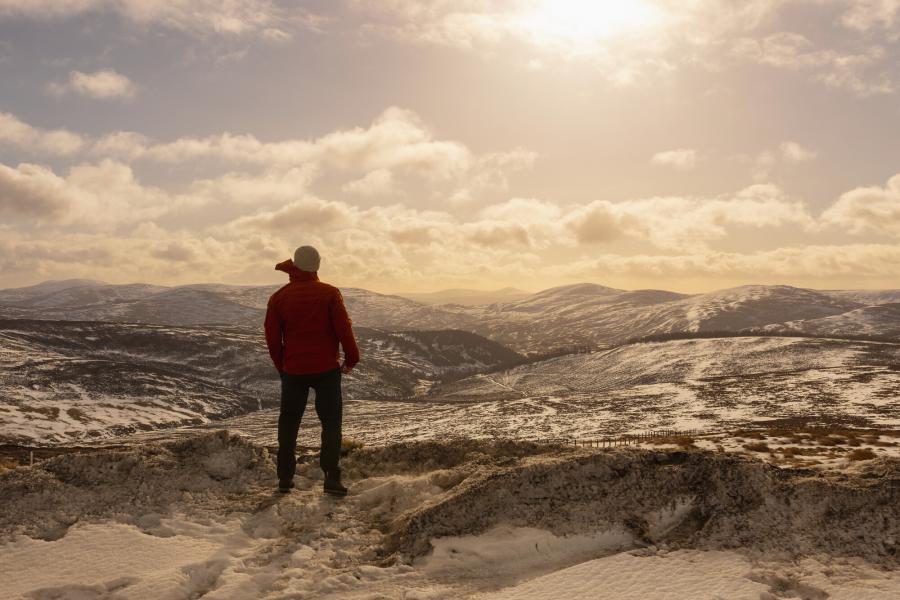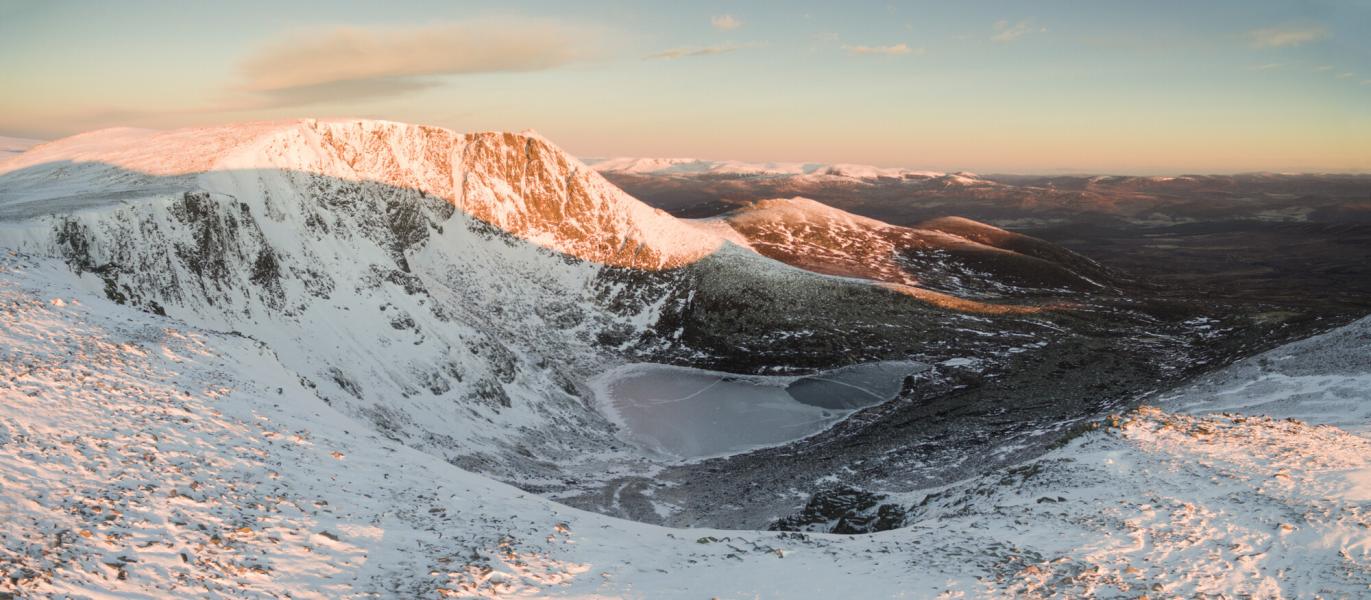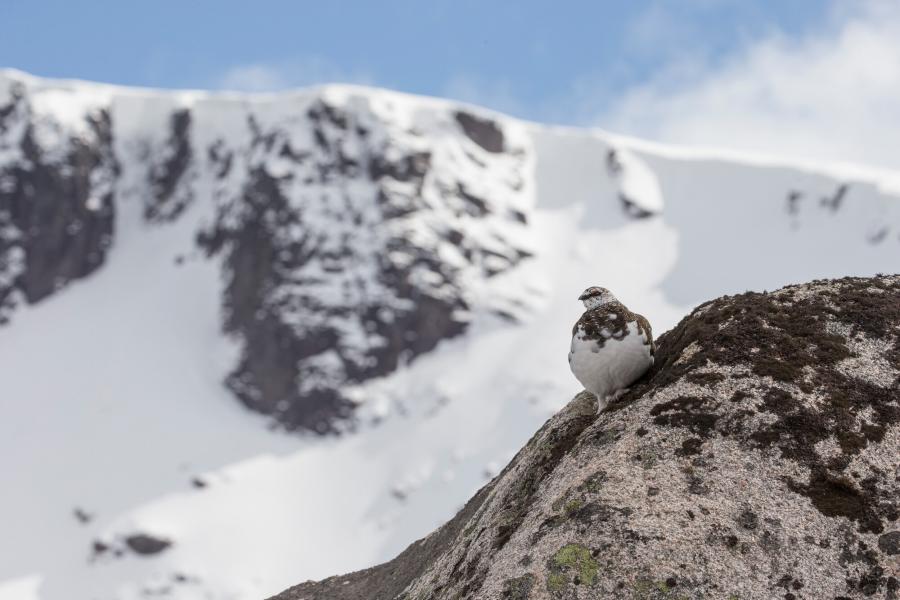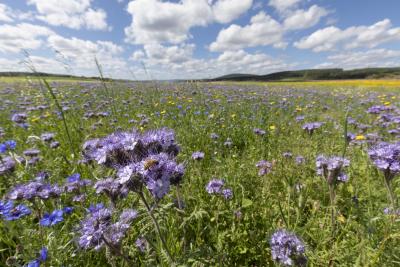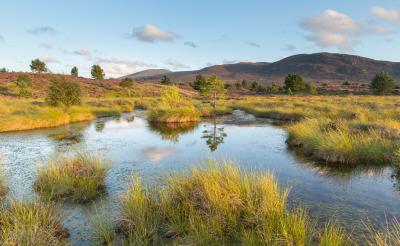Mountains and the plateaux
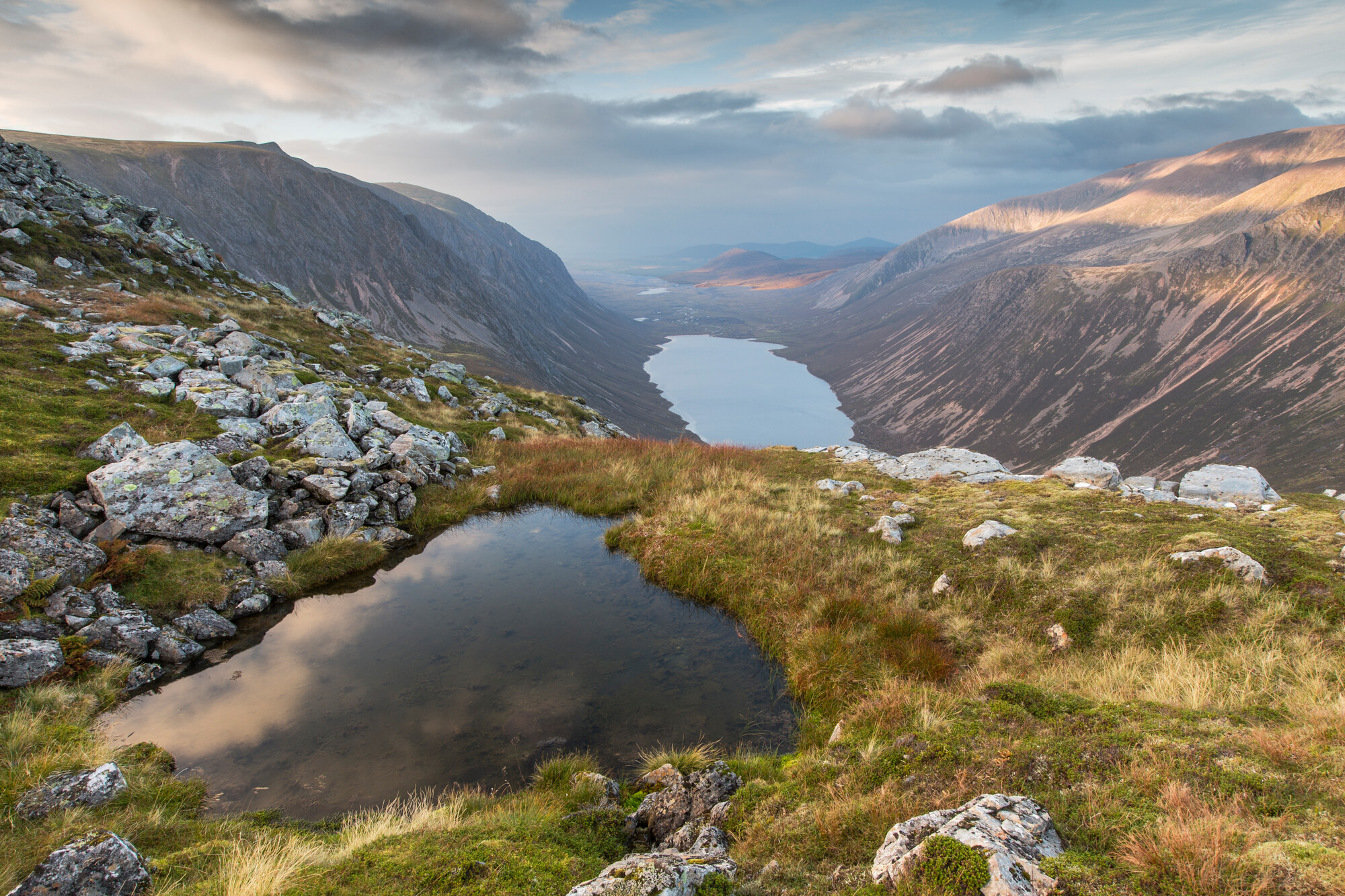
Famed for its mountains, the Cairngorms National Park is home to some of the most impressive and highest ranges of the UK. From the Drumochter hills in the south, the impressive corries of Glen Clova and Esk, through to Lochnagar in the east and the iconic Lairig Ghru, these diverse, compelling landscapes have inspired creativity and curiosity in people for many thousands of years.
The terrain varies hugely across hills and mountains of the National Park from craggy cliffs and deep grassy valleys, to peatland bogs and open moors.
Perhaps the most well-known of these mountains are the Cairngorms, known in Gaelic as Am Monadh Ruadh (roughly translated as red mountains). The plateau here is unlike anywhere else in the UK, forming part of the UK’s largest area of high ground, sitting at over 1,000 metres above sea level. This can make for extreme winter temperatures, unpredictable weather, and terrain that is as dangerous as it is spectacular. With avalanches in winter and flash floods in the summer, frost pockets develop in valley bottoms and storm fuelled gale-force winds ravaging the mountain plateaux this is a place of extremes.
The mountains of the National Park are impressive landscapes that demand caution and respect, but the Cairngorms specifically are also regarded as climatically, geomorphologically and biologically the most extensive 'arctic' area in the UK, making the whole area of national and European importance.
With all the extremes of the Cairngorm mountains, life still finds a way. Aside from lichens and mosses, many common plants can survive on the plateau, including the mat grass, carnation sedge and woolly fringe-moss as well as some of the most beautiful flowers, the alpine lady’s mantle, starry saxifrage and dwarf cornel, that burst into life each spring after the snow melts.
Scots pines and junipers at Invereshie extend up to 650m where they have become stunted and twisted by the harsher growing conditions found at these higher altitudes. These have long been regarded as the natural treeline, above which trees cannot grow to anything more statuesque than a wind-clipped shrub. However, elsewhere in the National Park, remnant pockets of downy birch and rowan trees occur higher still, protected from browsing animals by steep rocky terrain, at altitudes up to 700m and beyond. Recent decades have seen naturally regenerating pine trees race uphill to 800m or so in areas of the National Park where grazing pressure by deer has been reduced, such as around Glenmore Forest and the Northern Corries. In various corries and gullies around the National Park’s montane zone, such as in the Drumochter Hills and at Corrie Fee, vanishingly rare remnant populations of subarctic willows avoid as best they can the teeth of gales and deer alike.
But it isn’t just flora that persists. Some hardy creatures also call the plateau home. Birds like ptarmigan and snow bunting can be found in winter, their white feathers providing effective camouflage. In summer dotterel visit, feasting on the insects and worms that also live in the higher terrain of the National Park. Golden eagles soar above ridgelines, using their impeccable eyesight to search for prey like mountain hares, no easy feat when these perfectly disguised mammals’ colouring changes with the season, blending with rocks and snow alike.
Beloved by many, the hills and mountains of the National Park have shaped the identity of the surrounding communities and the way of life, and provided vital habitats for a range of important species.
Featured
Wildlife
The Cairngorms National Park is home to a quarter of the UK’s rare and endangered species. Its rich habitats are a haven for an array of wildlife, from iconic birds to elusive plants and flowers.
Wildfire management
As the climate changes, the risk of wildfires is ever more present in our daily lives and in a National Park, a wildfire has the potential to be devastating.
What we do
From pioneering conservation projects to community engagement and active travel, find out more about the range of work happening across the National Park.





